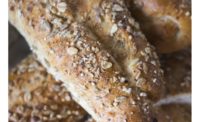Just Breathe
By Paul Waldron, Gladson Interactive
Things are looking up for the breath fresheners category.
Candy buyers are all smiles over the breath freshener category. After three years of declines, the breath sweetener sector of the candy business showed a 4 percent sales increase for the 52-week period ended May 20, 2006, according to ACNielsen data for food, drug and mass marketers (excluding Wal-Mart). Sales cracked the $200 million mark during that time, up from $197 million for the same period the year before. What makes retailers tingle is that gains are coming mostly via the sale of higher-priced products — not just unit movement. To some consumers, mints have become a status symbol or a fashion statement. Consumers don’t mind paying over $1 for the right mints — especially those in interesting packaging. Sales had stalled after years of rapid growth were fueled by the introduction of products like breath strips. The market became saturated with too many me-too items. According to a company called Research and Markets, a total of 189 new products were launched in this area from 2000 to 2005. In the last year, however, there have been some real product breakthroughs that have awakened the category.
|
New breed of breath fresheners
Technological advances, new flavors and multiple
merchandising locations are all behind this sales jump. Consumers look to
breath fresheners for more than pleasant breath; they also expect the items
to help whiten their teeth or even provide more energy. For example, Arctic
Blast provides a boost of energy fueled by caffeine, and Spangler Candy
Company’s White by Smint has papaya extract as a natural tooth
whitener. The tooth-friendly, sugar-free ingredient, Xylitol, is also
appearing in breath products for those looking to avoid sugar.
These are all factors that should push total gum, mint
and breath freshener sales to exceed $4.3 billion by 2007, according to the
research firm Packaged Facts. Shoppers are also embracing new flavors
— something that has become difficult in other candy areas. Where
shoppers may be getting tired of line extensions for line extension’s
sake in the candy aisle, their taste buds are inspired by new flavors of
breath products. Listerine has managed to revitalize sales of its strips by
adding flavors such as Citrus along with an addition of a new pocket breath
spray. Technology has also pushed mints beyond the traditional so that
shoppers can choose from liquid-filled mints such as IceBreakers Liquid Ice
or Momints. As far as flavors go, consumers are getting choices between
intense flavors and new, softer options. On the powerful side, there are
Tic Tac Bold and Certs Powerful Mints. For shoppers who want a softer
option, there are Ice Breakers Sours or Doublemint Twins Mints. Another
wrinkle is TheraBreath, a new line of oral care products spanning
mouthwash, toothpaste, mouth sprays, mints and strips. The line is backed
by Dr. Harold Katz, who is doing 350 live television, radio and print
advertisements.
Category managers are faced in candy with trying to
avoid stock-keeping duplication, while still offering a large assortment;
they are doing the opposite in breath and looking for a multitude of brands
to keep fickle shoppers coming back for more.
While some candy marketers may be preaching SKU
rationalization, it appears choice is not counter-productive in breath
fresheners. Still, retailers are urged to discontinue slow-moving items to
make room for new. Some of the trendy mint items seem to go out as fast as
fashion trends and need to be moved out of plan-o-grams, according to
manufacturers.
The opportunities in breath fresheners have caused a
rush of new companies to enter the fray. Niche players with unique items
are getting a chance to get their products into shelf sets. However, there
has been consolidation in the business with the big guys snapping up some
of the small innovators. Cadbury Schweppes, for example, jumped to the No.
2 position in the category with its acquisition a few years ago of Adams
Confectionery. And Lifesavers and Altoids were picked up by Wrigley in
2005.
There are numerous opportunities for merchandising
breath fresheners in secondary locations throughout the store. (See
sidebar, “Secondary Display Suggestions.”) In addition,
off-shelf merchandising is becoming more important in the breath category
as buyers look for ways to try up-and-coming brands without reshuffling
plan-o-grams. Mints are easily presented in clip strips and sidewings.
And, of course, the checkout area should be home to an
assortment of breath fresheners because the category is so
impulse-oriented. In fact, Research from Masterfoods found that gum and
mints are the most profitable, most purchased impulse item at the checkout.
Information Resources Inc.’s Consumer Insights Builder shows breath
fresheners have high potential for building household penetration. Research
from the company showed that fewer than 5 percent of households buy breath
fresheners. Better penetration of merchandising locations throughout the
store could help build household consumption.
There are those concerned about rising prices connected
to the new breed of breath fresheners. Industry watchers point out that
rising costs, such as gas prices, could make consumers less likely to
invest in expensive breath items. Some think marketers aren’t doing
enough to bring more innovation to a category so dependent on
“new.” Others worry that the rapid fire of new items merely
shifts market share instead of building sales. “But,”
concluded Wendy Liebmann, president and founder of New York-based WSL
Strategic Retail, “with costs of living rising, it is still a small
investment for fresh breath and a nice pick-me-up if you can’t afford
something like a new suit.”

